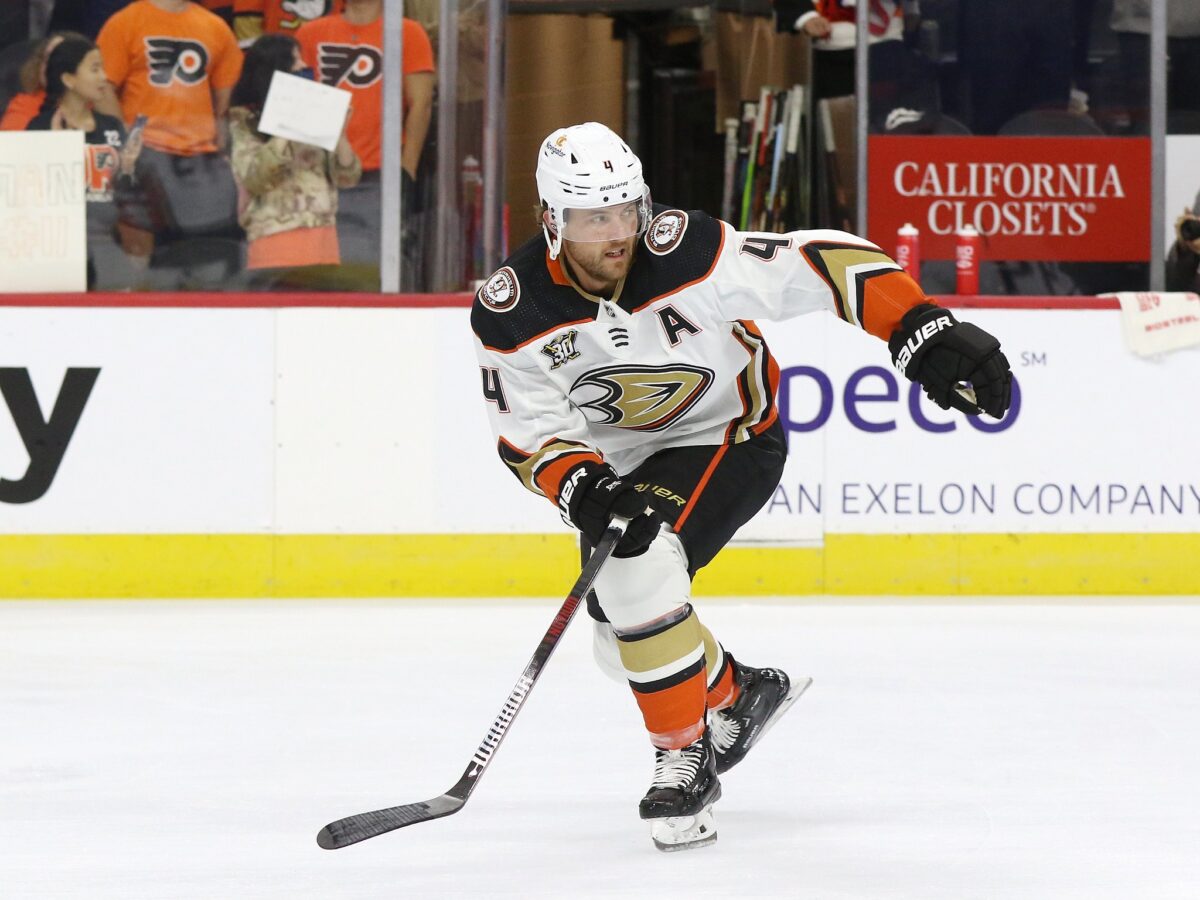The Anaheim Ducks wrapped up their 50th game of the season just before the All-Star Break with an overtime win against the San Jose Sharks on Wednesday (Jan. 31). The Ducks (18-30-2) are heading into the break with a modest four-game point streak. They’re still 16 points back of the Western Conference’s final Wild Card spot, but it’s a positive development for a club that will have little to play for in its final 32 games.
Related: Ducks News & Rumors: Zegras, Henrique, Luneau & Jones
Anaheim’s play through 50 games has been defined by injuries, penalties, and inconsistencies. Regardless, there have been some standout performances by several Ducks players. Let’s take a look at some of the team’s statistical leaders heading into the All-Star Break.
Goals: Frank Vatrano (22)
Anaheim’s lone representative in this year’s All-Star festivities is enjoying a breakout season at 29 years old. Frank Vatrano signed with the Ducks a year ago with a reputation as a shooter, but he was rarely featured in such a way that allowed him to score with high volume. As a staple in Anaheim’s top-six, Vatrano has back-to-back 22-goal campaigns. He’s currently shooting at a career-high 13.8 percent this season and has 32 games to set a new career-best in goals (24 in 2018-19 with Florida).
Despite the career year, Vatrano’s scoring rate has been volatile. He was among the league’s hottest goal scorers in October, with nine goals in as many games. November and December were less successful, as it took him the next 28 games to match his goal total from his first nine. His Jan. 31 overtime winner against the San Jose Sharks snapped a 7-game goalless drought, his second-longest dry spell this season (nine games from Dec. 2 to Dec. 21).
Points: Troy Terry (37)
After a slow start to the 2023-24 season, Troy Terry has been on fire for the last two months. Injuries across Anaheim’s top-six have been an ongoing issue, and it seemed to affect Terry’s consistency. He recorded only 13 points through October and November, with nearly a third of those coming in a four-point night on the Nov. 1 game against the Arizona Coyotes.

Since Dec. 2, Terry has been a point-per-game player (24 points in 24 games). He enters the All-Star Break with points in six straight games and goals in each of the last three. His linemates remain inconsistent, and Anaheim’s last game had him playing on the third line opposite Vatrano and centered by Bo Groulx. This will continue into the second half of the season, as both Trevor Zegras and Alex Killorn will be out for at least another month.
Penalty Minutes: Radko Gudas (81)
Radko Gudas leads the team in penalty minutes, but he’s got a lot of company. Ross Johnston has served one fewer minute while appearing in seven fewer games, and three other players have north of 60 penalty minutes. Gudas ranks fourth in the league in penalty minutes, but five Ducks players are in the top 14.
Penalties have been a major issue for this Ducks team. They average over 14 minutes a game, a minute and a half more than the next-closest Florida Panthers. To their credit, the Ducks bring their opponents down with them, as they see the third-most opposing penalty minutes per game as well. The issue is the Ducks are a team that should avoid special teams altogether, as they are a bottom-10 penalty-killing team and rank only 21st with the man advantage.
Time on Ice: Cam Fowler (1262)
Cam Fowler has been the team’s defensive workhorse since the departure of Hampus Lindholm and Josh Manson in 2022. While some defensive prospects like Jackson LaCombe, Pavel Mintyukov, and Olen Zellweger appear to be in Anaheim’s long-term plans, Fowler is still leaned on at even strength and both facets of special teams.

While the rookie LaCombe has played heavy minutes so far this season, he’s still been on the ice for 350 fewer minutes than Fowler. Perhaps this dynamic will change as the younger players develop and Fowler ages further into his 30s, but he will remain the team’s workhorse in the interim.
NHL Edge Data
In October, the NHL launched its advanced statistics website that utilized its puck and player tracking data. We took a look at some of Anaheim’s statistical leaders at the time it went live, so let’s see how the numbers have changed in the last three months.
Fastest top speed: Vatrano (23.49 mph) (1/15/24 @ FLA)
When we last looked at this data, Vatrano was still Anaheim’s fastest skater with a 22.77 mph burst to force an icing against the Columbus Blue Jackets on Oct. 24. In fact, he also managed the top speed among Ducks’ players last season as well. Vatrano is a burner, and a 4-on-4 sequence against the Panthers left him with enough open ice to hit a new gear.

This burst of speed wasn’t an offensive breakaway or another attempt to force an icing. Instead, the Panthers somehow immediately turned a defensive zone faceoff into a 2-on-0 breakaway of their own, and Vatrano hit the jets to try to catch up. He was able to get a stick in on the play, but John Gibson had to make the sprawling save to keep the score tied. Regardless of whether or not his effort was in vain, it was amazing to see Vatrano blow past teammate Ryan Strome in the neutral zone as if he was standing still.
Top Shot Speed: Gudas (101.69 mph) (11/1/23 vs. Ari)
Anaheim’s top-shot leader in October was, surprisingly, Jamie Drysdale, with a modest 92.61 mph slap shot in the season opener against the Vegas Golden Knights. This bar was certainly going to be higher, as the Ducks have plenty of heavy shots on the blue line and perhaps none more powerful than Gudas’. A 101.71 mph Howitzer off his stick led the Panthers a year ago, and it only took him 10 games in a Ducks’ uniform to cross the century mark again.
At the time, Gudas’ 101.69 mph shot was the fastest in the league. It’s since fallen to the fifth-fastest, with all four shots ahead of his breaking the 102-mph threshold. It’s unlikely that another Ducks player will top Gudas’ shot speed, but I wouldn’t be surprised if he can improve on his mark.
Distance skated: Fowler (180.08 miles)
It shouldn’t be surprising that Anaheim’s workhorse defenseman is their leading skater in terms of distance traveled. The most interesting aspect of this data is just how much a top-pairing defenseman can be expected to skate. At 180 miles through 50 games, Fowler is skating over 3.5 miles per game. With an average time on ice of 25 minutes per night, he skates a mile nearly every seven minutes.
While the NHL Edge data is fascinating to look at, it often lacks context. Vatrano’s top speed didn’t result in breaking up a scoring opportunity, and Gudas’ cannon shot went unscreened and directly into the leg pad of goaltender Karel Vejmelka. We’ll continue to monitor and add context to this data as the season goes on, as well as check in on the counting stats at the end of the season.
Statistics courtesy of Hockey-Reference.
